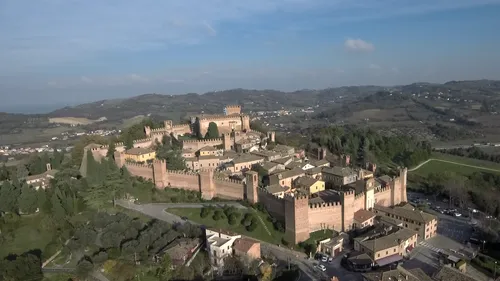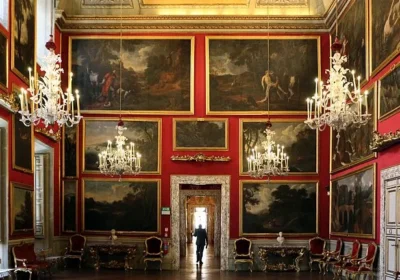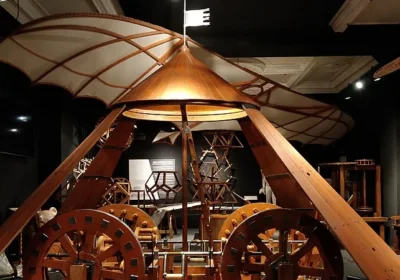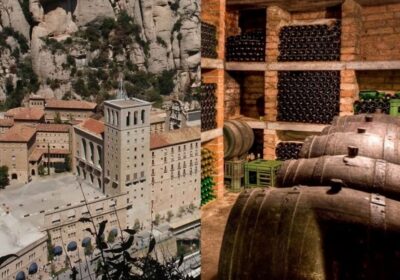Pesaro – Duration – 3 hours
Pesaro is a small elegant aristocratic town on the Adriatic coast of Italy. People come here for peace and quiet, for quiet evening walks and a cup of coffee in a cosy cafe. The sedate life of the town is broken in August during the famous Rossini Opera Festival. Rossini Opera Festival. It was in Pesaro in 1792 that the great Gioacchino Rossini was born. The pride of the city is the Rossini Opera House on the street of the same name and the house-museum of the great composer.
Pesaro is also rich in historical values. Its heyday was during the Renaissance, which influenced its architectural appearance in general. The most famous example is the magnificent Ducal Palace in Piazza del Popolo. From the first floor you have a wonderful view of the main square with its palaces, sculptures and fountains.
It is also worth visiting the Cathedral of San Lorenzo and looking closely at A. Pomodoro’s sculpture “Sphere” in the centre of the fountain, symbolising our universe.
URBINO – Duration – 8 hours
The historic city centre is protected by UNESCO.
In the Renaissance period, thanks to Duke Federico of the Montefeltro family, it became known as one of the most important cultural, political and educational centres of Italy. Urbino was called “the ideal city” because of its harmonious combination of natural beauty and the proper organisation of space. The Duke of Montefeltro ordered the construction of the Palazzo Ducale, now the National Gallery of the Marche, which houses paintings by world-famous masters such as Raphael, Piero della Francesca, Guido Reni, Titian and others. The Cathedral of Urbino, the Oratory of San Giovanni Batista and the Palazzo Odasi should not be overlooked.
Urbino is the birthplace of Raphael. The three-storey Via Raffaello, 57, where Raphael was born in 1483, attracts a large number of tourists – admirers of the great artist’s talent.
It is also home to the Carlo Bo University of Urbino. The number of students studying there (13 thousand) practically make up the population of the city.
In the first half: sightseeing tour of the city, a visit to Raphael’s house and the Oratory. After lunch: Palazzo Ducale, the Church of San Francesco and the Cathedral.
GRADARA – Duration – 3 hours
This is a small ancient town that grew up around a hilltop fortress. Its history is directly linked to the most influential families: the Malatesta, Sforza and Della Rovere, who contributed to the construction and development of the town.
The castle began to be built in the 12th century, but under Malatesta rule in the 14th century it became not only an impregnable fortress with two rows of fortress walls, but also a luxurious residence.
The castle in Gradara is the setting for one of the most famous love stories: Paolo Malatesta and Francesca da Polenta. Francesca was married to Gianciotto, Paolo’s own brother. Taking the lovers by surprise, the jealous husband stabbed both of them to death. This tragic story is depicted in works of literature, painting, music and cinema. It is also mentioned in the fifth song of Dante’s Inferno.
In the XV-XVI centuries Gradara belonged to the Sforza family. Lucrezia Borgia, wife of Giovanni Sforza, daughter of Pope Alexander VI, spent 3 years here. Gradara is one of the most beautiful medieval towns in Italy.
FANO – Duration – 3 hours
This is the third largest town in the Marche region. During the Ancient Roman era it was known as Fanum Fortunae – Temple of Fortune. Retired soldiers of the Roman Empire settled here.
The symbol of Fano is the Triumphal Arch of Emperor Augustus, erected in 9 AD, and the city walls also built by Augustus.
The small town of Fano has many historical and architectural monuments. Of interest is the Malatesta Castle with its art gallery. Here you can admire the paintings of Guido Reni, Guercino and Giovanni Santi (father of Raphael Santi), as well as the Palazzo Montevecchio, the Church of San Paterniano, the Church of San Pietroin Valle and the Cathedral of the city.
URBANIA – Duration – 3 hours
It was named after Pope Urban VIII, who transformed an old medieval settlement into a thriving city. Before that, the place was called Castel Durante and was used as the summer residence of the Dukes of Urbino.
The main attraction is the Church of the Dead. This small temple houses a chapel with 18 mummies preserved from the Medieval and Renaissance periods. Each mummy has its own story and there are legends about them. One of them says that a young man was buried alive in a lethargic sleep….. and now his mummy periodically “wakes up”, moving and making strange noises.





